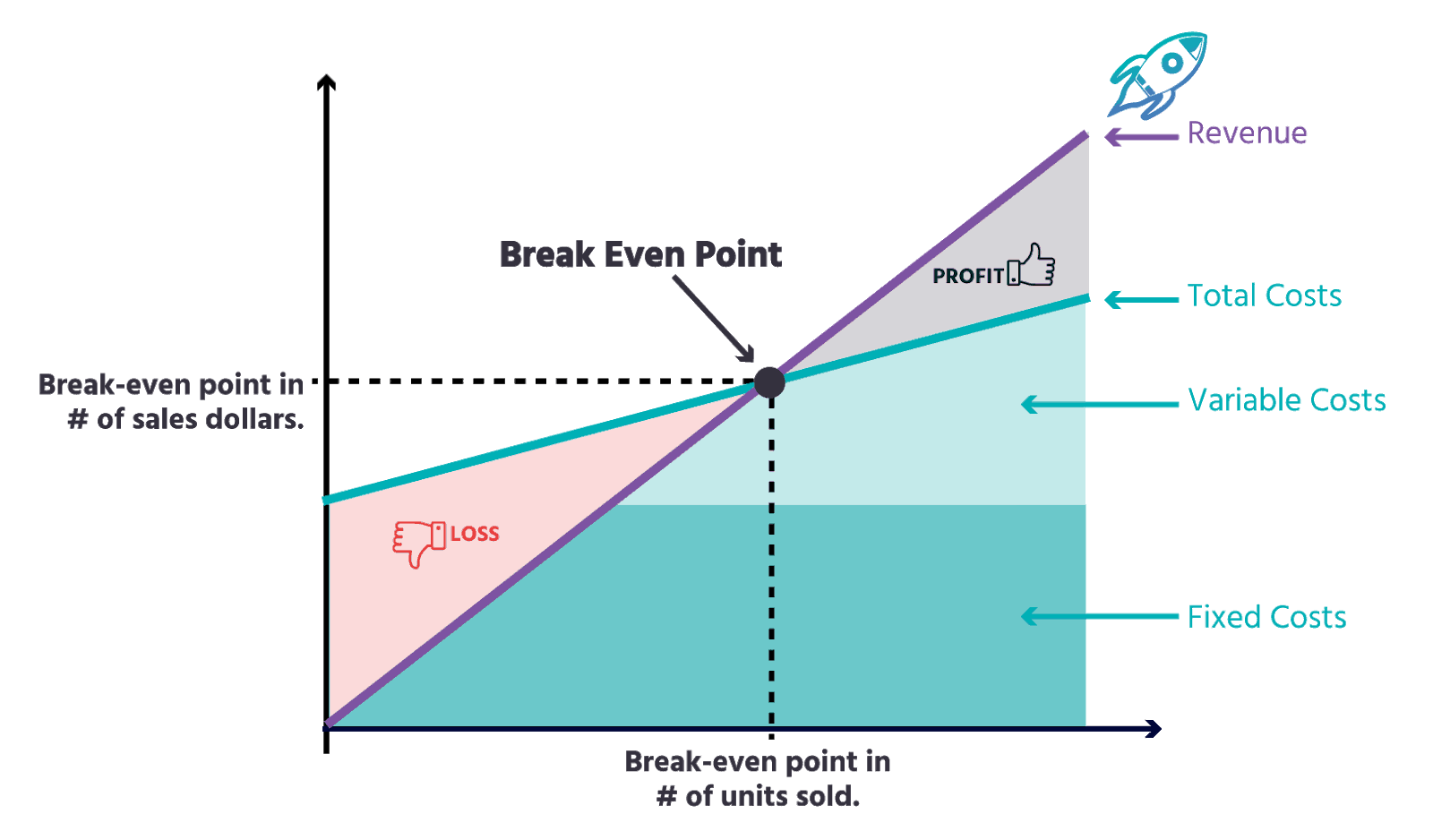
The sale price of your product is $15 per unit. The annual fixed expenses to run the business are $15,000 and variable expenses are $7.50 per unit. Suppose, for example, you run a manufacturing business that is involved in manufacturing and selling a single product. The break-even point in units can then be multiplied by the sales price per unit to calculate the break-even point in dollars. If the information about sales price per unit, variable expenses per unit and the total fixed expenses is available, we can solve the equation for ‘Q’ to find the number of units to break-even. Notice that the left hand side of the equation represents the total sales in dollars and the right hand side of the equation represents the total cost. Fe = Total fixed expenses for the period.



The concept explained above can also be presented as follows:Īfter reading this article you will be able to compute the break-even point of a single product company using two popular methods – equation method and contribution margin method. The computation of sales volume required to break-even is known as break-even analysis. Calculation of break-even point is important for every business because it tells business owners and managers how much sales are needed to cover all fixed as well as variable expenses of the business or the sales volume after which the business will start generating profit. Break-even point is therefore also known as no-profit, no-loss point or zero profit point. At this point, a business neither earns any profit nor suffers any loss. The point at which total of fixed and variable costs of a business becomes equal to its total revenue is known as break-even point (BEP).


 0 kommentar(er)
0 kommentar(er)
